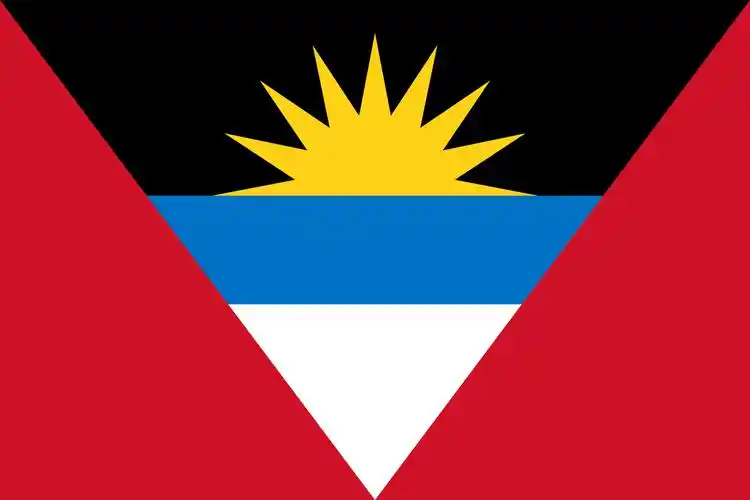Overview of Antigua and Barbuda

Overview of Antigua and Barbuda
Antigua and Barbuda is an island nation located in the northern part of the Lesser Antilles in the Caribbean Sea, consisting of Antigua, Barbuda, and Redonda, with a total area of 442.6 square kilometers. The capital of the country is St. John, with a population of approximately 101000 people (as of 2022), the vast majority of whom are of African black descent, and the majority of residents believe in Christianity. The official language is English, which is also the lingua franca.
historical background
The history of Antigua and Barbuda can be traced back to 1493, when Columbus arrived on the island during his second voyage to the Americas and named it after the Antigua Church in Seville, Spain. Between 1520 and 1629, the region was invaded by Spanish and French colonizers. It was occupied by Britain in 1632 and officially became a British colony in 1667 according to the Treaty of Breda. In 1967, it became an associated state of Britain and established an internal autonomous government. On November 1, 1981, it declared independence and became a member of the Commonwealth of 12.
Political system
Antigua and Barbuda implements a parliamentary constitutional monarchy, with the head of state being Queen Elizabeth II of the United Kingdom, represented by a Governor appointed by the Queen. The government is governed by the Labour Party and the political situation is relatively stable. The parliament is composed of the Senate and the House of Representatives, with a term of five years.
Economic situation
The main economic sector of Antigua and Barbuda is tourism, and the country implements a tourism based national strategy. In 2022, the gross domestic product (GDP) was 1.69 billion US dollars, with a growth rate of 6.02%, and the per capita GDP was 16787 US dollars.
Geographical features
The geographical features of Antigua and Barbuda include two main islands - Antigua and Barbuda. Antigua Island is a limestone island with a low and flat terrain, with a plain in the middle and an ancient volcanic cone in the southwest. The highest point is Mount Obama (Bogi Peak), with an altitude of 402 meters. Barbuda Island is a coral island with many forests and a lagoon in the west. The region is influenced by the northeast trade winds throughout the year and belongs to a tropical oceanic climate. The average annual temperature is 27 ℃ and the annual precipitation is about 1020 millimeters.
In summary, Antigua and Barbuda is a small country with a rich historical background, stable political system, and a tourism driven economy. Its natural environment and population composition also have a certain degree of diversity.
The economic profile of Antigua and Barbuda mainly includes the following aspects:
Overall economic situation
The Gross Domestic Product (GDP) of Antigua and Barbuda was 1.69 billion US dollars in 2022, with a growth rate of 6.02%, and a per capita GDP of 16787 US dollars. The country implements the strategy of building a nation through tourism, which is the most important economic sector, accounting for 60% of the gross domestic product and the main source of foreign exchange income.
Main economic sectors
Tourism industry: Antigua and Barbuda has a highly developed tourism industry, accounting for 60% of its gross domestic product and being the main source of foreign exchange earnings. The main tourists come from North America, the United Kingdom, and countries in the Caribbean region.
Manufacturing and construction industries: Manufacturing and construction industries are important economic sectors in the country. Although the industrial foundation is weak, it has produced clothing, furniture, electroplated panels, etc. in the past, mainly exported to the United States, Canada, Europe, and the Caribbean region. In recent years, these industries have faced challenges due to poor management and lagging basic industries.
Agriculture: The position of agriculture in the national economy continues to decline, with main agricultural products including corn, vegetables, fruits, and a small amount of island cotton. The government encourages the development of agriculture and reduces dependence on food imports.
Financial and fiscal conditions
The fiscal revenue and expenditure situation of Antigua and Barbuda shows that in recent years, fiscal expenditure has exceeded revenue, resulting in a fiscal deficit. The foreign exchange reserves are 63.6 million US dollars, and the total external debt is about 380 million US dollars.
Foreign trade situation
Antigua and Barbuda's main export products include rum, pottery, mattresses, foam plastics, vegetables, etc. Its main trade partners are the United States and Caribbean countries. Imported food, building materials, agricultural products, and automobiles, etc.
In summary, the economy of Antigua and Barbuda is dominated by tourism, followed by manufacturing and construction, while the status of agriculture has declined. The fiscal and financial situation is relatively tight, with foreign trade mainly focused on exporting agricultural products and importing daily necessities.

